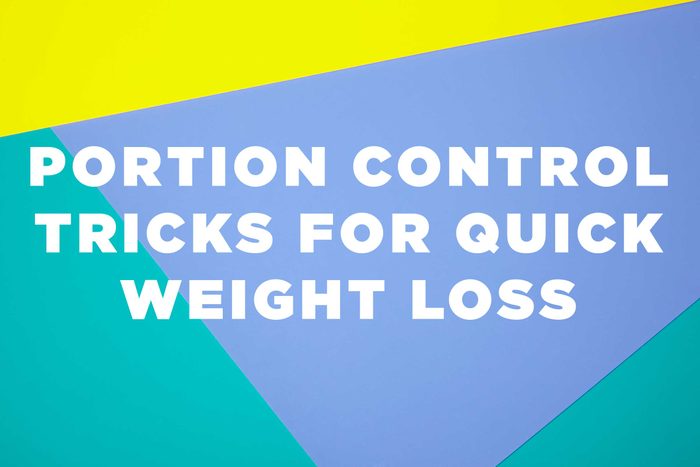
Portion confusion = calorie overload
Our portion sizes are influenced by everything except the right thing. Product packaging (munching from the pretzel bag), restaurant servings (devouring that entire mouthwatering steak), and the dimensions of our dishes (filling the whole bowl with cereal) all cue us to eat more than we should. As a result, most people have no idea what the USDA-recommended serving sizes actually are. “People think they’re eating the right amount,” says Lori Zanini, RD, of Lori Zanini Nutrition and a spokesperson for the Academy of Nutrition and Dietetics. “But when I have people take pictures of their food, what they think is one cup is actually three!” Using the following visuals can help correct areas prone to portion confusion and let you save more than 1,000 calories in 24 hours. Here are more quick ways to boost weight loss.
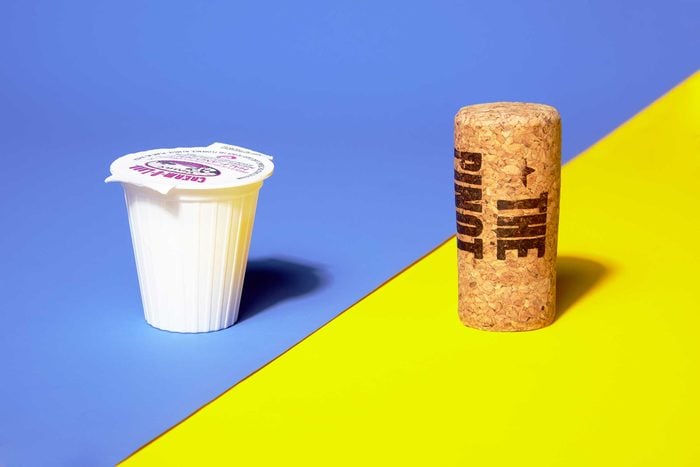
The proper portion for coffee creamer = wine bottle cork
A great way to start the day is to watch what we put in our cup of Joe. “What some people like isn’t the taste of coffee, per se, but the taste of those flavored creamers in their coffee,” says Nancy Farrell, RDN, the founder of Farrell Dietitian Services and a spokesperson for the Academy of Nutrition and Dietetics. “They don’t realize it adds up.” The correct serving size for fat-free creamer is 1 tablespoon (25 calories), which is equal to a wine-bottle cork or a plastic cough-medicine cup. By contrast, Farrell hears of people using 6 tablespoons of creamer.
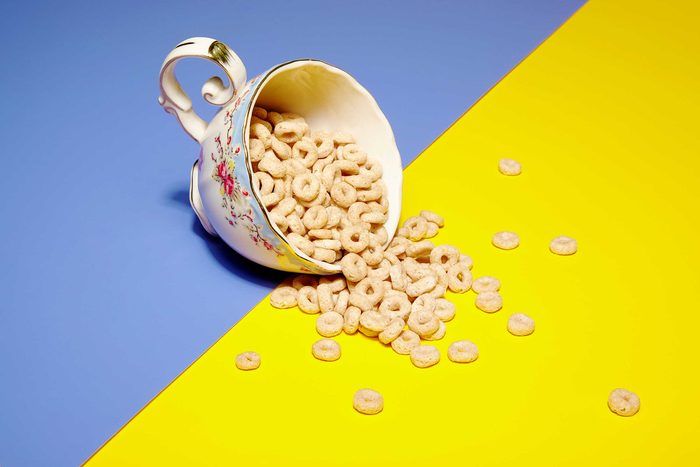
The proper portion for dry cereal = teacup
Few people sitting down to their bowl of flakes or O’s realize the maximum serving size for dry cereal is about 1 cup (110–130 calories), an amount that would fit in a standard teacup, says Farrell. Most people fill up an entire bowl, which doubles that amount to 260. As an added tip, when unpacking your groceries, check the serving size on the cereal packaging, then keep a measuring cup for that size right in the box as a scooper, says Marina Chaparro, RDN, founder of Nutrichicos Children’s Nutrition Center and a spokesperson for the Academy of Nutrition and Dietetics. Here are sneaky ways “healthy” cereal is making you fat.
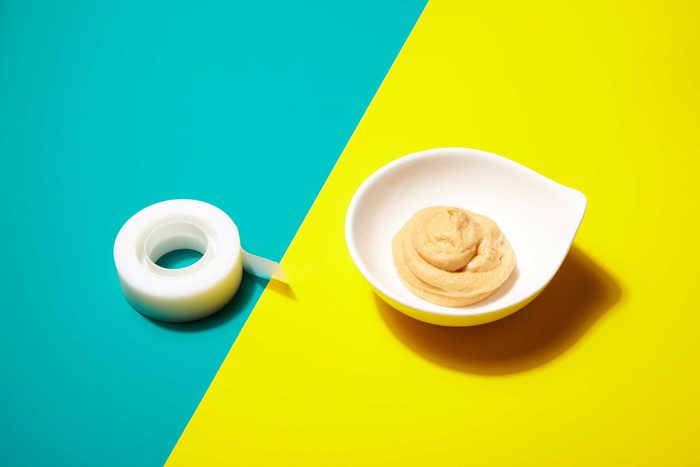
The proper portion for hummus = roll of tape
If lunchtime includes hummus (it’s a perfect alternative to mayo on your sammie), realize that even for this healthy spread, the correct serving size is only 2 tablespoons (50 calories)—and that’s just for the plain variety. This is about the size of a roll of Scotch tape, says Zanini. People can commonly devour up to a ½ cup (150 calories). Here’s how to incorporate hummus into healthy snacks for adults.
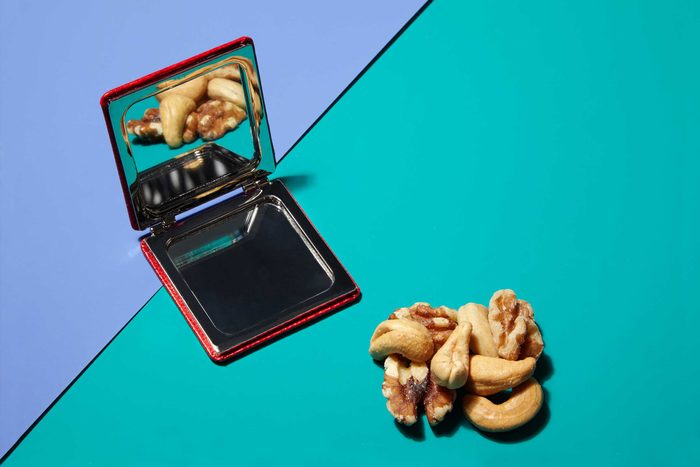
The proper portion for nuts = compact cosmetic mirror
Nuts are heart-healthy so we give ourselves permission to eat more than we should. The right serving is 1 oz (on average 150 calories), which is about the dimensions of a compact cosmetic mirror. When we eat those nuts mindlessly from the bag, it’s easy to munch ½ cup of walnuts or cashews, for about 380 calories. “An actual meal starts at 300 to 500 calories,” Farrell points out.
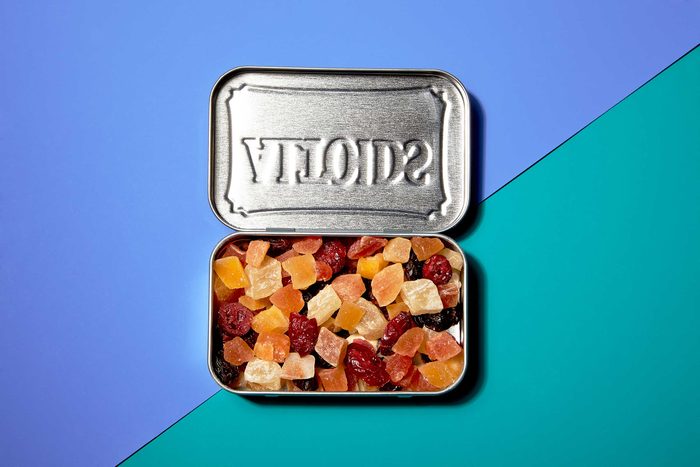
The proper portion for dried fruit = Altoids tin
While it can be convenient to fill a plastic baggie with dried fruit, the recommended serving for raisins, for example, is 1/4 cup (110 calories), which roughly equals the size of an Altoids tin, says Zanini. “Because they’re dried, they’re condensed, so there are more calories in a smaller amount,” she adds.
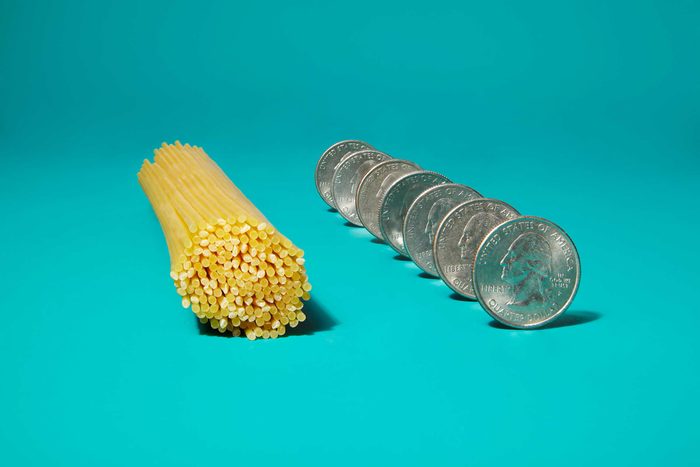
The proper portion for dry spaghetti = U.S. quarter
When it comes time to cook dinner, remember that a serving of spaghetti is only 2 ounces (200 calories). Think of it as a side dish rather than the main meal. Expressed in terms of the dry stalks you pull from the box, the handful should be the circumference of a U.S. quarter, says Farrell. As for cooked spaghetti, the 2-ounce side-dish serving size would cover roughly the area of a beverage coaster. Most people double these amounts, Farrell adds. To avoid temptation, try one of these healthy alternatives to pasta.
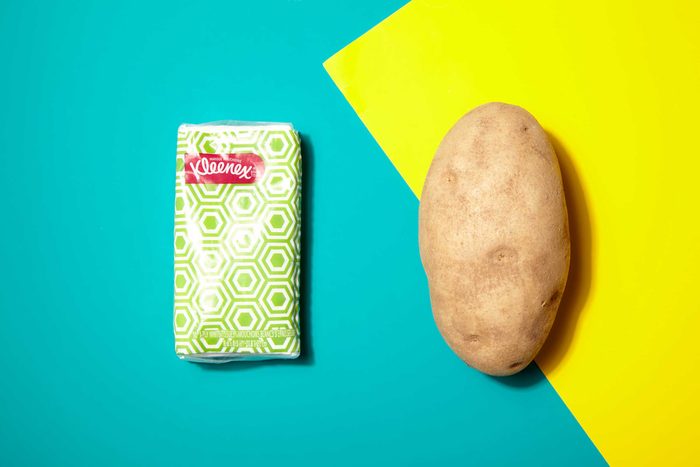
The proper portion for a potato = travel tissue pack
The correct amount of this healthy starch is a small spud (about 130 calories), says Farrell, which is approximately the dimensions of a travel tissue pack. “Restaurants often serve potatoes that measure from your wrist to your fingertip, which is double what you should have,” she explains. “In that case, take half home.” Don’t miss these surprising things you should never eat at a restaurant.
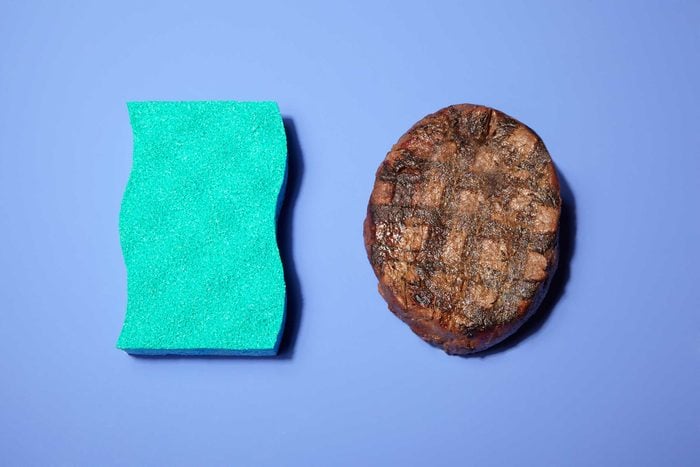
The proper portion for cooked meat = sponge
For cooked meats with medium fat content, the recommended serving size is 3 ounces (225–250 calories), says Farrell, which is about the size of your standard green-and-yellow kitchen sponge. By contrast, that half-pound ground-beef burger at a restaurant would be 500 calories—and that’s before the bun and condiments! Here’s how to grill meat to lower your cancer risk.
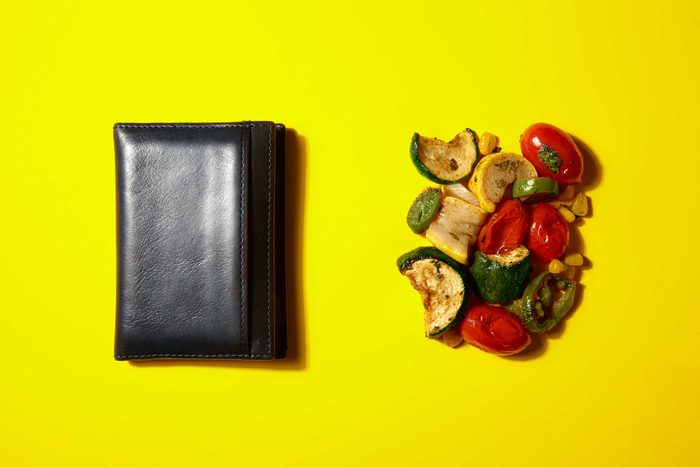
The proper portion for cooked vegetables = folded wallet
Not all portion sizes need to shrink. “People are falling short on vegetables—if they’re eating them at all,” says Farrell. “Veggies are filling, high in fiber, help manage diabetes, and lower your risk for colon cancer—you should have them every lunch and supper.” For cooked green vegetables, such as green beans, ½ cup (25–30 calories) is the right serving size, which is around the same dimensions as a folded man’s wallet. In general, the best portion control strategy isn’t just slashing calories; it’s redistributing them. “If people just cut everything they’re used to eating in half, they’ll lose weight, but they’ll be miserable and hungry,” says Zanini. “So fill the gap with vegetables. If you cut back on pasta, add zucchini and peppers to your sauce—it will look just as big with fewer calories.” Need inspiration? Here are 10 of the healthiest vegetables you can eat.
